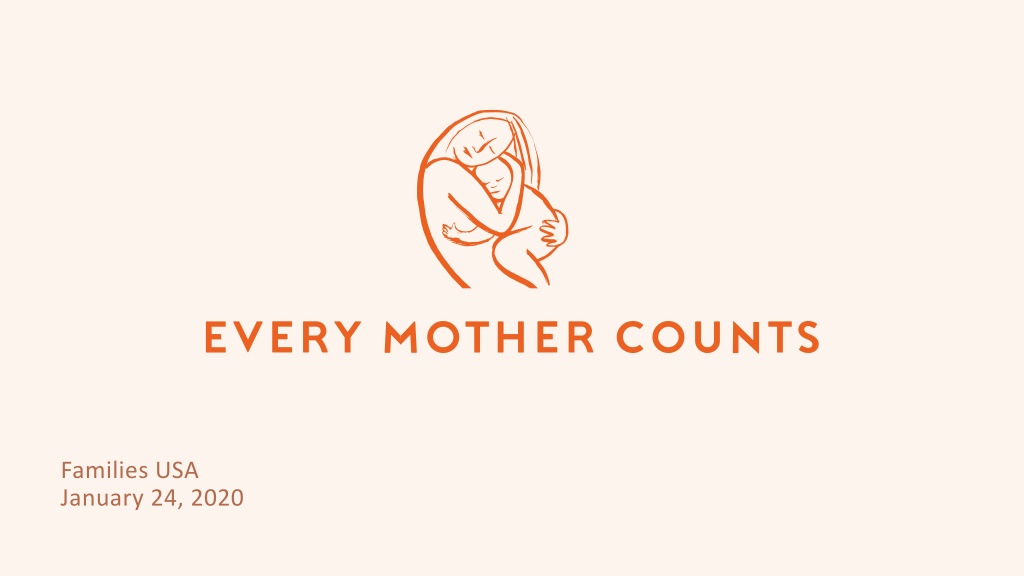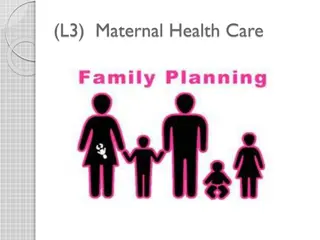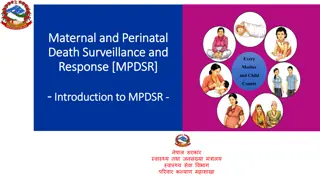Maternal Health Crisis in the US: A Call for Change
The United States faces a significant maternal health crisis, with rising mortality rates and complications despite high healthcare spending. The need for high-value care, respect, and equity in maternity services is emphasized, advocating for the utilization of effective models such as midwifery and community-based doula care. Efforts are being made to improve outcomes and experiences, increase healthcare equity, and better support women's agency in maternal care.
Download Presentation

Please find below an Image/Link to download the presentation.
The content on the website is provided AS IS for your information and personal use only. It may not be sold, licensed, or shared on other websites without obtaining consent from the author.If you encounter any issues during the download, it is possible that the publisher has removed the file from their server.
You are allowed to download the files provided on this website for personal or commercial use, subject to the condition that they are used lawfully. All files are the property of their respective owners.
The content on the website is provided AS IS for your information and personal use only. It may not be sold, licensed, or shared on other websites without obtaining consent from the author.
E N D
Presentation Transcript
Families USA January 24, 2020
CONTEXT The maternal health crisis in the US Where s the M in MCH? Not recognized as a problem No accountability in the system Over 10 years greater attention Maternal mortality review Safety Bundles - protocols + guidelines
10 YEARS LATER Maternal mortality and severe complications continue to rise in US. NOT High Value Care Spend the most but Underuse high-value, low-tech strategies Overuse interventions High rates not linked to improved outcomes Mistreatment, disrespectful care Disparities remain unchanged
WHERE WE NEED TO GO Quality, respectful, and equitable maternity care for all ` MOVING FORWARD We don t HIGH QUALITY CARE need to reinvent Rescue Prevention Clinical Comprehensive the wheel! Top-down Respect, dignity, rights Disparities Equity
HIGH VALUE MODELS OF CARE Improving outcomes, enhancing the experience of care, reducing costs ` RESEARCH SHOWS BOTH MODELS: Midwifery Model & Community- based Doulas Result in safer, healthier, more satisfying births Facilitate self-advocacy & satisfaction Increase health equity Reduce spending Evidence-based models to support optimal maternity care practices. yet both models are underutilized.
Where do we want to go? More women are informed and equipped to exercise their agency Increased availability and visibility of high-value models Increase in respectful and positive maternity care experiences Greater trust and utilization of the medical system and health services Improved health outcomes for women and infants High-value care - cost-effective spending with better outcomes/experiences better ROI
Highlights from 2019 Bipartisan commitment to maternal health + Medicaid extension Energy & Commerce bills Helping MOMS Act Medicaid Extension + Doula Report (from MOMMIES Act) Maternal Health Quality Improvement Act of 2019 Rural health + Demonstration Projects Black Maternal Health Caucus leadership 9 more bills
Federal Legislation Maternal Health Awareness Day Native Women s Maternal Health Resolution BABIES Act Midwives for MOMS Act MOMMIES Act MOMMAS Act + many, many more! Key topics perinatal support, midwifery model, and equity
Mistreatment Findings Mistreatment Findings Rate of mistreatment by race
Mistreatment by Place of Birth Mistreatment by Place of Birth
Measuring Mistreatment by Measuring Mistreatment by Place of Birth + Provider Type Place of Birth + Provider Type Women who reported 1+ mistreatment item: Women who reported 1+ mistreatment item: Midwife + community birth: 4.8% 4.8% Midwife + hospital birth: 23.8% 23.8% Doctor + hospital birth: 30%
Implications Consequences of Mistreatment Prevalence of reports of mistreatment in a high resource setting Prevalence of reports of mistreatment in a high resource setting being ignored providers failed to respond to their requests for help Additional research needed The California Pregnancy-Associated Mortality Review (CA-PAMR): Healthcare provider factors Healthcare provider factors - most common contributor to maternal deaths, 81% of maternal deaths in that time period. The most common provider factor was delayed response to clinical The most common provider factor was delayed response to clinical warning signs, followed by ineffective care warning signs, followed by ineffective care























